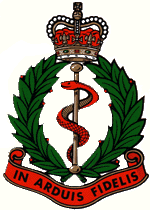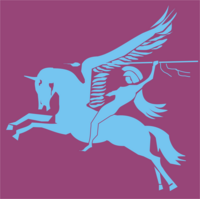133rd (Parachute) Field Ambulance
| 133rd (Parachute) Field Ambulance | |
|---|---|

|
|
| Active | 1943–1945 |
| Country | United Kingdom |
| Branch | British Army |
| Type | Medical |
| Role | Airborne forces |
| Size | Field Ambulance |
| Part of | 4th Parachute Brigade |
| Engagements |
Operation Slapstick Battle of Arnhem Operation Doomsday |
| Insignia | |
| The emblem of the Second World War British Airborne Forces, Bellerophon riding the flying horse Pegasus |  |
The 133rd (Parachute) Field Ambulance was a Royal Army Medical Corps unit of the British airborne forces during the Second World War.
The 133rd (Parachute) Field Ambulance was formed in Palestine in January 1943, by the conversion of the 133rd Field Ambulance to parachute duties. It was then assigned to the 4th Parachute Brigade, part of the 1st Airborne Division.
As part of the 1st Airborne Division it took part in Operation Slapstick, part of the Allied invasion of Italy. The unit returned to England at the end of 1943, to prepare for their next mission. That was operation Market Garden in the Netherlands. During the following battle of Arnhem, the division was destroyed only 2,100 men returning from the 10,000 that had started the mission. Amongst the men who remained behind from the 133rd were those men not already captured during the battle, who choose to remain behind with the wounded, becoming prisoners of war. Reformed after the battle the 133rd took part in Operation Doomsday in Norway after the end of the Second World War.
Impressed by the success of German airborne operations, during the Battle of France, the British Prime Minister, Winston Churchill, directed the War Office to investigate the possibility of creating a corps of 5,000 parachute troops. In September 1941 the 1st Parachute Brigade began forming, comprising three parachute infantry battalions. In keeping with British Army practice at the same time as the infantry battalions were forming, airborne supporting arms were formed including Royal Army Medical Corps volunteers. Of the seven airborne field ambulances formed during the Second World War, two were glider borne the 181st and the 195th. While the other five were parachute trained the 16th, 127th, 133rd, 224th and the 225th.
...
Wikipedia
